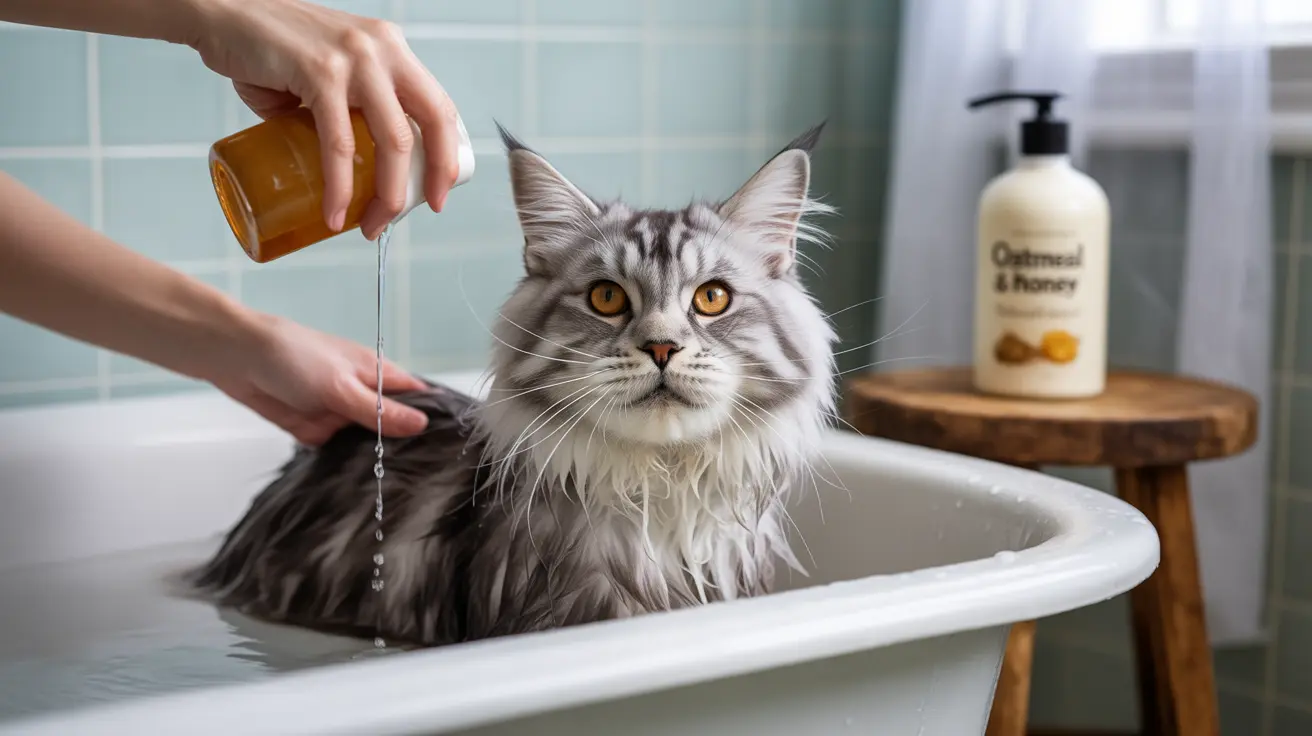While cats are excellent self-groomers, there may be times when your feline friend needs a bath. In these situations, you might wonder if baby shampoo is a safe alternative to cat-specific products. This comprehensive guide will explore the safety considerations, potential risks, and best practices for bathing your cat.
Understanding the unique characteristics of feline skin and proper bathing techniques is crucial for maintaining your cat's health. Let's delve into why specialized cat shampoos are recommended and what alternatives are available when you're in a pinch.
Understanding Cat Skin pH and Its Importance
Cat skin has a distinct pH level ranging from 6.2 to 7.5, making it more alkaline than human skin, which typically has a pH of 5.5. This difference is crucial when selecting appropriate bathing products for your feline companion.
Baby shampoo, while gentle for human infants, is formulated for human skin's acidic pH. This mismatch can disrupt your cat's natural skin barrier, potentially leading to various skin issues.
The Truth About Baby Shampoo and Cats
While baby shampoo isn't immediately toxic to cats, it's far from ideal for regular use. The pH imbalance can cause:
- Skin dryness and irritation
- Disruption of natural oils
- Potential allergic reactions
- Interference with flea treatments
- Increased risk of bacterial or fungal infections
When Emergency Bathing Is Necessary
In situations where your cat needs immediate cleaning and no cat-specific shampoo is available, a fragrance-free baby shampoo might be used as a one-time solution. However, this should only be considered in genuine emergencies, such as:
- Contact with toxic substances
- Excessive dirt or debris
- Medical emergencies requiring immediate cleaning
Recommended Alternatives to Baby Shampoo
Instead of reaching for baby shampoo, consider these safer alternatives:
- Cat-specific pH-balanced shampoos
- Veterinary-recommended products
- Waterless cat cleaning foams
- Pet-safe wipes for spot cleaning
Best Practices for Cat Bathing
When bathing your cat, follow these essential guidelines:
- Use lukewarm water
- Apply cat-specific shampoo sparingly
- Avoid getting water in ears and eyes
- Rinse thoroughly to remove all product
- Dry gently with a soft towel
- Reward your cat after bathing
Frequently Asked Questions
Is it safe to use baby shampoo on cats for bathing?
While baby shampoo isn't toxic, it's not recommended for regular use on cats. The pH mismatch can cause skin irritation and disrupt your cat's natural skin barrier. Use cat-specific shampoo whenever possible.
Why is baby shampoo not recommended for regular use on cats' skin?
Baby shampoo is formulated for human skin's pH (around 5.5), while cat skin has a higher pH (6.2-7.5). This difference can lead to skin problems and disrupt your cat's natural protective barriers.
What are the risks of using baby shampoo instead of cat-specific shampoo?
Risks include skin dryness, irritation, disruption of natural oils, potential allergic reactions, and interference with flea treatments. Regular use can lead to more serious skin conditions.
What should I do if I need to bathe my cat but don't have cat shampoo?
In emergencies, use fragrance-free baby shampoo as a one-time solution, ensuring thorough rinsing. For future needs, keep cat-specific shampoo on hand or consult your veterinarian for recommendations.
How does cat skin pH differ from human or baby skin, and why does it matter for shampoo choice?
Cat skin is more alkaline (pH 6.2-7.5) than human skin (pH 5.5). This difference means human products, including baby shampoo, can disrupt the cat's skin pH balance, potentially causing irritation and other skin issues.
Conclusion
While baby shampoo might seem like a gentle alternative for bathing your cat, it's best to stick with products specifically formulated for feline use. Understanding your cat's unique skin needs and using appropriate products will help maintain their health and comfort. When in doubt, always consult with your veterinarian for personalized recommendations.






